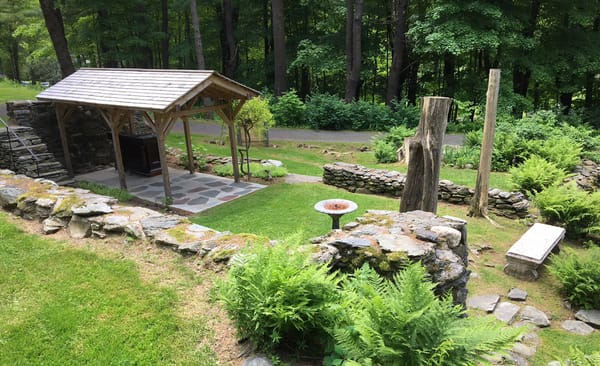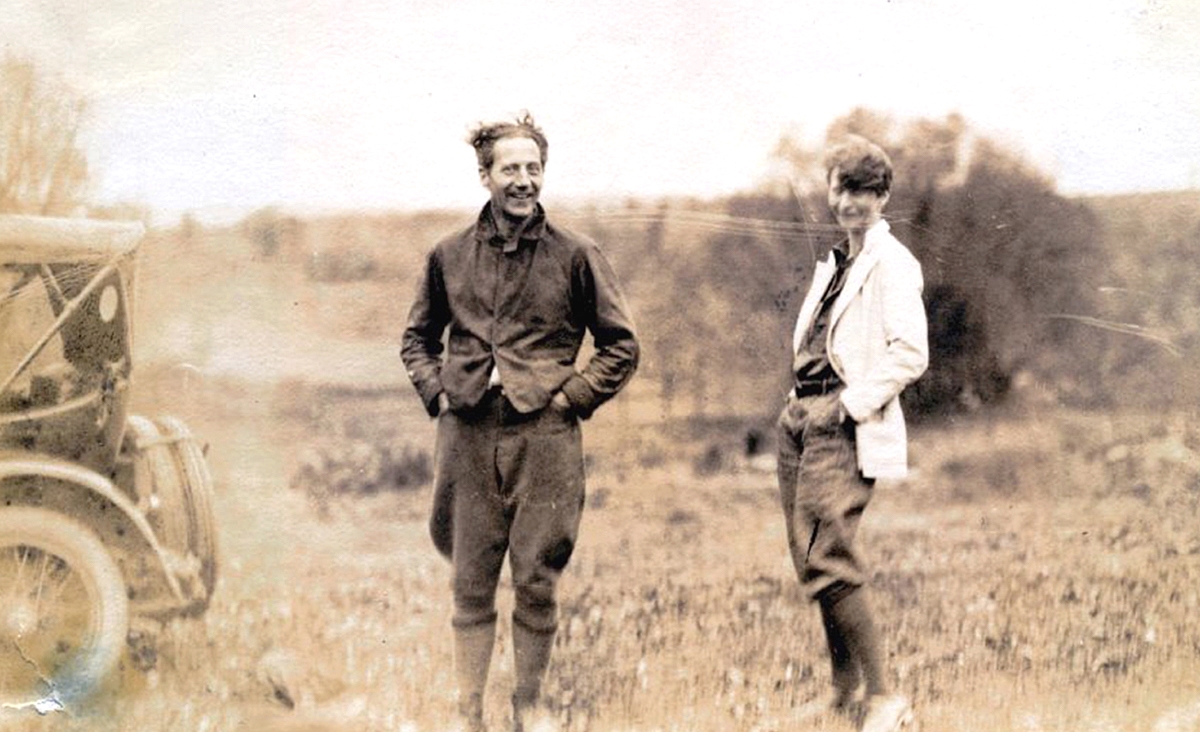Steepletop, Edna St. Vincent Millay's Austerlitz home, at risk of closing
A tour guide at Steepletop explains why it's important to keep the poet's home and gardens accessible.

A tour guide at Steepletop explains why it's important to keep the poet's home and gardens accessible.

Steepletop's outdoor bar, 2017.
We are fortunate in the Rural Intelligence region to have access to so many historical homes of the once rich and famous (and literary). If only maintaining those properties were as easy as hiring a housekeeper. Sadly, the remaining weeks of the tour season at Steepletop, Edna St. Vincent Millay’s Austerlitz, New York home, may be the last unless the Millay Society — the nonprofit that maintains the house, gardens, and 200 acres of woods and fields that inspired some of her most beloved poems — can overcome its financial challenges.
In 2006, the Society sold about 430 acres of the property to New York State for conservation land and since then has done an admirable job of restoring the house and gardens, and creating a visitors’ center with gallery and gift shop. But visitors, donations and permissions fees cover only about a third of Steepletop’s operating budget. To keep the National Historic Landmark open to the public, the Society needs to raise $1 million to shore up its financial footing, and/or to partner with an arts/cultural/historical organization.
Tours of the house, gardens, and surrounding woods and fields began in 2010, and I have been guiding those tours for most of the time since then. I have seen the eyes of visitors well up in tears at the sound of Millay’s poetry and have heard their awed gasps on entering her writing cabin, library and the scene of her death. The comment I probably hear most often, though, is “I had no idea that this would be so cool!” It would be a terrible shame if this local treasure were no longer shared with the community and wider world.
In the years since the tours began, Millay devotees and the merely curious have come from every region in the country and continent on Earth to see the place where one of America’s greatest poets lived and worked. After her death in 1950, her sister Norma inherited Steepletop and lived there until 1986, with little more than the poet’s royalties and permission fees for income. Norma always intended for Steepletop to become a museum honoring her sister’s life and work, and so never remodeled the house or sold any of the furniture. Consequently, the people who come from near and far to see Millay’s library, bedroom and dining room find them exactly as the poet left them. As Millay lived full time here for the last 25 years of her life, the visitors’ experience is quite rare as historic homes go — a permanent residence with all its original furnishings.
Despite illnesses that at times kept her confined, Millay loved the outdoors and designed Steepletop to spur that delight. With the help of a landscape architect, her husband’s nephew, she built a series of themed gardens, a clay-surface tennis court that earned a reputation for being the finest place from Hudson to Pittsfield to play, and an outdoor entertainment area complete with a wet bar sheltered by a rustic pavilion and spring-fed swimming pool, which summer guests were always welcome to use as long as they did so in the nude. To a journalist on assignment for a profile of her, she once described the area as a garden “where the flowers are watered with gin.”
Today, the party area with its rose garden and fountains (which, like the pool were fed by water piped in from a not-very-nearby spring), her kitchen garden, and the wide fields give the best impression of what the property was like during Millay’s lifetime. In one of those fields, she once treated her guests to al fresco plays by an itinerant troupe of Elizabethan theater performers. If the Millay Society’s current drive succeeds, perhaps such entertainments will return to this fertile ground.
To learn more about visiting Steepletop, and how you might help, visit millay.org.

